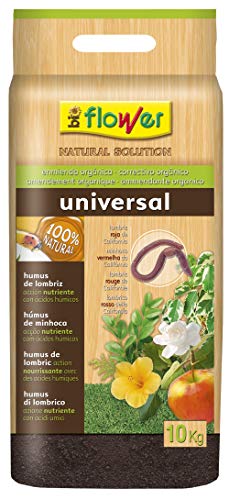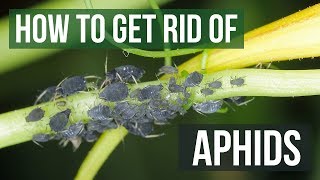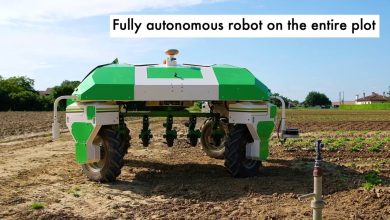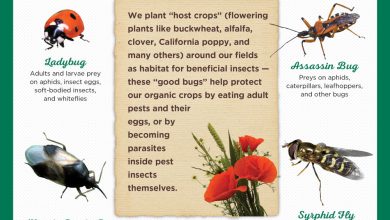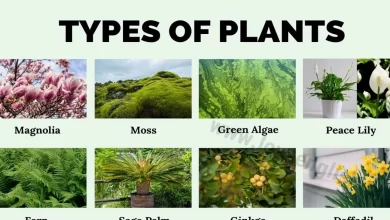Worm Humus: What is it? How to prepare it? Tips when using it
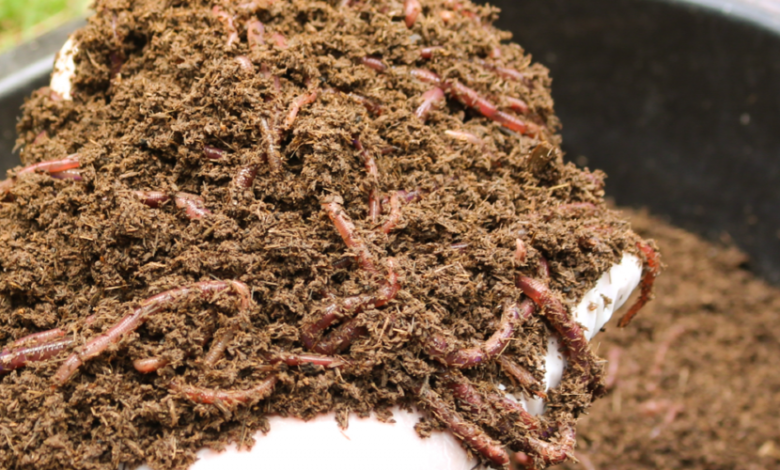
Worm humus is one of the techniques that has worked best for us when it comes to preparing compost and fertilizing the land.
The earthworm humus is an organic and ecological fertilizer, the result of the transformation that the earthworms make when decomposing the homemade organic matter such as mature compost.
It is one of the best organic fertilizers that exist, since it lacks chemical elements. It has a very fine particle size and is very rich in nutrients. In addition, it lacks bad odors and excessive humidity.
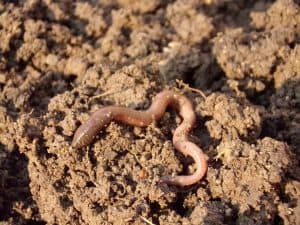
Humus (by itself) is the substance that results fromthe decomposition of organic remains, by the action of organisms and microorganisms such as fungi and bacteria.
It has a characteristic black or dark brown color due to its high concentration of organic carbon and is found mainly in the upper parts of soils with organic activity.
However, the term » humus » is also used to describethe mature compost, although this, in reality, is not entirely correct. Strictly speaking, the terms compost and humus are not synonymous nor can they be used in a similar way.
Characteristics and qualities of earthworm humus
- Increases and improves soil structure.
- Increases the capacity for the absorption of nutrients.
- Vegetables and fruits taste better.
- It is a natural pest and disease control. It will protect your garden.
- It is an important non-chemical and artificial fertilizer.
Do you need a natural fertilizer? Try the worm humus
Earthworm humus is one of the best natural fertilizers that we can find for our garden or for our fruit trees.
Earthworms do an extraordinary jobtransforming organic remains such as manure, decomposing food, fallen leaves and branches, pruning, etc. into an almost perfect compost for our plants. Compost is the black soil created from the decomposition of organic matter, and can be made from food scraps or yard waste.
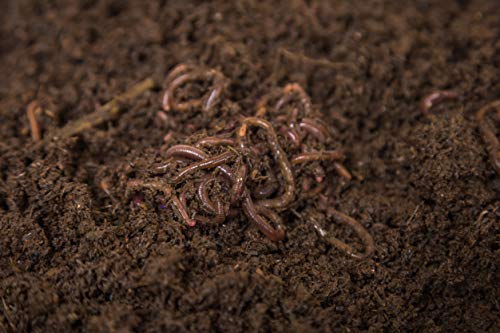
Mature compost is used as a compost or substrate when it takes on a dark, earthy appearance and is distinctive in that almost all of the materials have decomposed.
However, although it is ready for use, some organisms such as insects, bacteria, fungi and microbes continue to feed on it, so the decomposition is not yet complete.
As these organisms continue to act on the compost, they break down the elements at a molecular level, releasing nutrients into the soil for use by crop roots.
This, precisely, is what makes humus so important:humus retains 90% of its weight in water, which offers the substrate a large amount of moisture, quite useful during periods of drought.
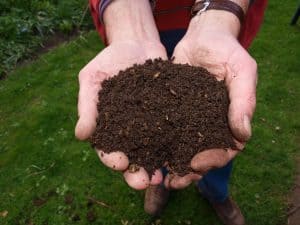 Likewise, humus provides the substrate with a spongy padding that regulates temperature and preserves the nutrients that plants require for a long time, especially those as necessary as calcium, magnesium and phosphorus.
Likewise, humus provides the substrate with a spongy padding that regulates temperature and preserves the nutrients that plants require for a long time, especially those as necessary as calcium, magnesium and phosphorus.
In this way, the humus gives the soil desired crumbly texture and improves soil structure by makingmake the floor more flexible, allowing air and water to circulate more easily.
In conclusion, the humus is what remains at the end of the whole process ofdecomposition of mature compost.
By then, all the useful chemicals have already been extracted from the organic matter.
Therefore, we can say that although there is a certain percentage of humus in a mature compost, 100% humus only appears when all the organic matter in the compost has been completely decomposed. This, of course, can occur over a period of several years.
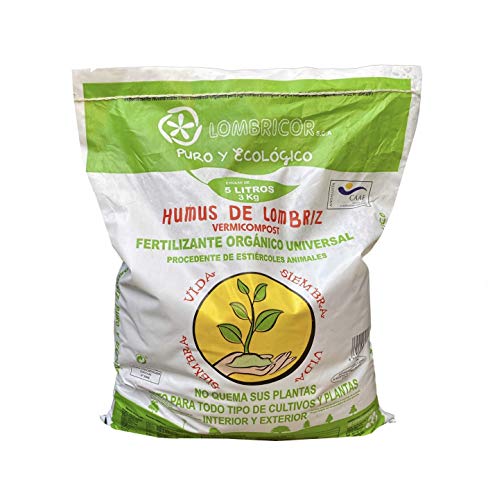
So… What is worm humus?
The decomposition of compost, as we have already seen, is carried out by different organisms. Some of the most common in organic agriculture arethe worms.
The use of earthworms to fertilize the soil is also known as vermicomposting or vermiculture.
Earthworm humus has also been used to encourage biodynamic agriculture.
Unlike other organisms, earthworms not only devour the organic matter they find, but also help dilute certain minerals and return completely decomposed organic matter to the soil, enriching it.
Its great advantage lies in the fact that, as organisms that live in the subsoil, they can carry out this entire process in the deepest layers of the earth, dispersing nutrients effectively. The result is a very spongy soil that facilitates aeration and water retention.
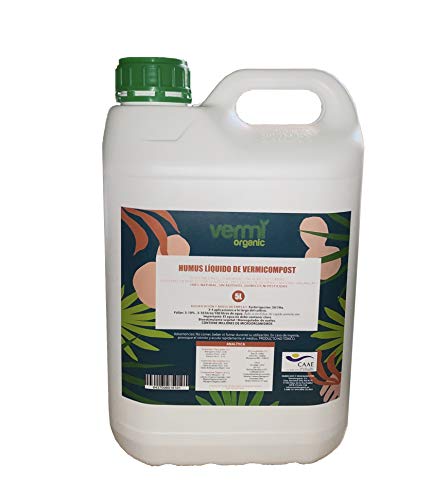
What elements does it contain?
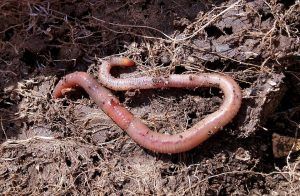 Although all of the above is truly valuable in agricultural terms,the most important characteristic of earthworms—and the main reason why the humus they produce is so nutritious—,It lies in their droppings.
Although all of the above is truly valuable in agricultural terms,the most important characteristic of earthworms—and the main reason why the humus they produce is so nutritious—,It lies in their droppings.
Indeed, land fertilized with earthworm humus is richer in nutrients.
This is because the digestive systems of earthworms house certain species of microbes that better fix the components, which are expelled in the excrement and are more easily absorbed in the soil.
The portion of soil that has passed through the digestive tract of earthworms is called the drilosphere.
The drilosphere has higher amounts of assimilable nitrogen, phosphorus, potassium, magnesium and calcium than decomposed matter that has not been digested by earthworms.
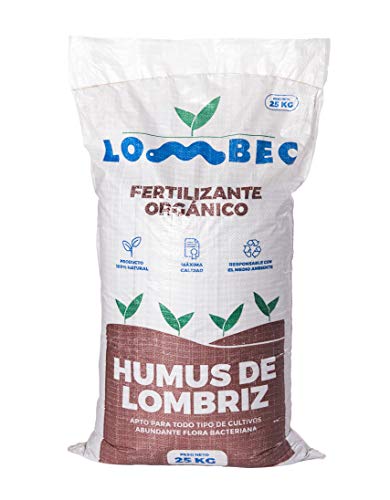
Approximate percentage of components in earthworm humus:
- Nitrogen 1.95 – 2.2%
- Phosphorus 0.23 – 1.8%
- Potassium 1.07 – 1.5%
- Calcium 2.70 – 4.8%
- Magnesium 0.3 – 0.81%
- Available iron 75 mg/l
- Copper 89mg/kg
- Zinc 125mg/kg
- Manganese 455mg/kg
- Boron 57.8mg/kg
- Organic Carbon 22.53%
- C/N 11.55%
- Humic Acids 2.57 g each 100g
- bacterial load
- Organic Matter 38%
What are the benefits of earthworm humus?
The benefits that earthworm humus can give us can be divided at a physical, chemical and biological level:
- On a physical level: it reduces soil erosion and improves seed germination. In addition, it retains nutrients and water better.
- On a chemical level: the earth is nourished by fantastic substances for the growth of plants and fruits.
- At a biological level: it favors the formation of mycorrhizae and increases the microbial flora. In addition to protecting against pests and diseases.
Main benefits of Worm Humus:
- Improves aeration and water and nutrient retention capacity.
- Improves the germination capacity of seeds.
- Reduces soil erosion.
- Improves soil management.
- It enriches the substrate with organic substances and essential minerals.
- Promotes the assimilation of nutrients by transforming them into assimilable forms.
- Preserves and raises the organic content of soils.
- It favors the formation of mycorrhizae.
- Increases beneficial microbial flora.
- Increases plant resistance to pests and diseases.
- Does not contain bad odors.
- Improves the flavor of the fruits.
- Protects crops and makes them more resistant.
- It is suitable for all types of crops.
- Its excessive use is not harmful.
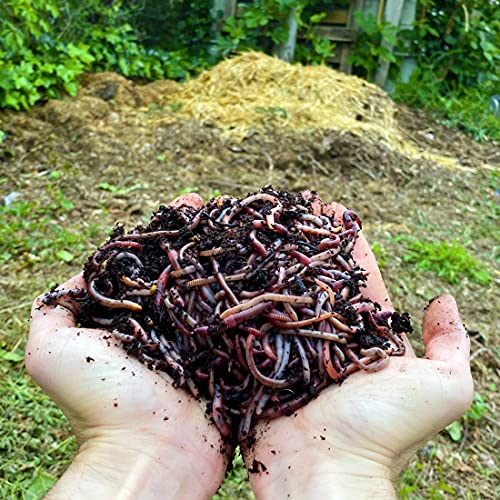
Natural protector of plants and trees
In addition to the above, it should be noted thatworm castings have a huge amount of microbes and microorganisms.
This causes them to associate with the roots of the plants in your garden and protect them from attacks by bacteria, fungi and other pathogens.
Species of worms suitable for worm castings
All worms compost, but some species are not suitable for this purpose. The species most used for composting are
- Eisenia fetida, the red worm or tiger worm (Eisenia andrei).
- Lumbricus rubellus, does not adapt as well to the shallow compost bin as Eisenia fetida.
- Eisenia hortensis, European night worms, also known as dendrobaenas, dendras, and night worms.
- Eudrilus eugeniae, African caterpillar.
- Perionyx excavatus, blue worms can be used in the tropics.
These species are typically found in organic-rich soils throughout Europe and North America and live on decaying vegetation, compost, and piles of organic matter such as manure.
They can be an invasive species in some areas.
Because they live shallow and feed on decaying plant matter in the soil, they are easily adapted to living on food or plant debris in the confines of a worm bin.
Composting worms can be ordered online, from mail-order nurseries, or from fishing stores where they are sold as bait. They can also be collected from compost and manure piles. These species are not the same worms found in ordinary soil or on pavement when the ground is flooded with water.
The use of Lumbricus terrestris is not recommended as they burrow deeper than most compost bins can hold.
Raw material with which earthworm humus can be produced
There is little food waste that vermicomposting can’t compost, though meat scraps and dairy products are susceptible to spoilage, and outside bins can attract vermin.
Green waste should be added sparingly to prevent the container from overheating.
Small-scale or home systems
These systems typically use kitchen and garden waste, employing “worms and other microorganisms to digest organic waste, such as kitchen scraps”:
- All fruits and vegetables (including citrus fruits, in limited quantities).
- Peels and tips of vegetables and fruits.
- Coffee grounds and filters.
- Tea bags (even those with a high level of tannins).
- Grains like bread, crackers, and cereals (even moldy and stale ones).
- Egg shells (rinsed).
- Leaves and grass clippings (not sprayed with pesticides[28]) Newspapers (most inks used in newspapers are non- toxic).
- Paper towels (that have not been used with cleaners or chemicals).
Large scale or commercial
These vermicomposting systems need reliable sources of large amounts of food. Currently working systems use:
- Dairy cow or pig manure.
- Sewage sludge.
- Brewery waste.
- Waste from cotton mills.
- Agricultural residuals.
- Waste from food processing and grocery stores.
- Cafeteria waste.
- Grass clippings and wood chips.
How is worm castings harvested?
The most recommended is to buy Californian red worms (Esenia fetida) in fishing or agricultural stores, since these are the most indicated, due to their voracity and also because of their high rate of reproduction, their population tripling in just a few months. .
To facilitate the process you needmature compost and a vermicomposter.
The worms are gradually placed in the mature compost, passing through each of the three trays of the vermicomposter.
In each phase, the humus will be formed until there is aliquid substance that can be used as fertilizer. This process can take up to 9 months.
If you prefer, you can also buy liquid worm castings in specialized stores.
Our recommendation for Worm Humus:
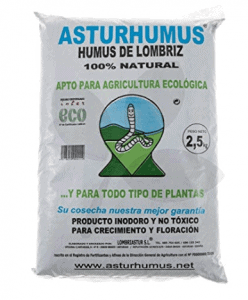
When and how should we use the earthworm humus?
The worm humusit is highly effective in fertilizing the soil, throughout the cultivation process.
- To apply the humus in our plants, fruit trees or crops in general, we must deposit it around.
- Previously we must have scratched the land a little with a hoe or other similar tool.
- In this way, after depositing the humus, it will be easily buried and we will help the microorganisms that the humus has to associate with the roots of plants and trees.
- If you are doing it at a time when the rains are scarce or it is very hot, it is highly recommended to water afterwards.
How often should we add it to our plants, trees or orchard?
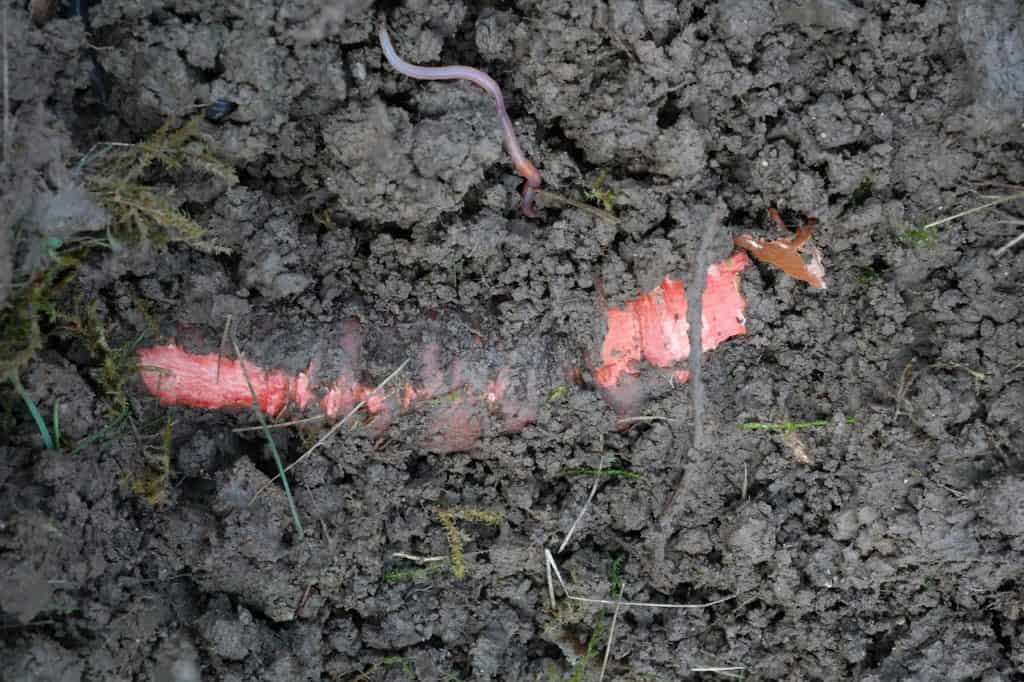 In the case of fruit trees or if you apply extensive agriculture, it isrecommended to put 0.5 kg per square meter.In the case of orchardsamounts should be increased to1.5 – 2 kg per square meter.
In the case of fruit trees or if you apply extensive agriculture, it isrecommended to put 0.5 kg per square meter.In the case of orchardsamounts should be increased to1.5 – 2 kg per square meter.
What species of worm do we recommend?
In principle, most species are suitable. Neverthelesswe recommend California red worms.
Why the Californian red worm?
They eat a lot and their ability todigesting organic matter is brutal.
With this we will be able to speed up the decomposition process by the worms andwe will obtain an organic fertilizer of the highest quality.
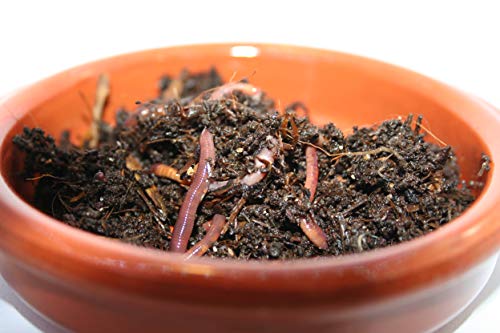
Maintenance and possible problems of earthworm humus
Bad smells
When closed, a well-maintained container is odourless; when opened, it should have little odor.
The smell can also depend on the type of composted material that is added to the container. An unhealthy worm bin can smell, potentially due to low oxygen conditions.
Earthworms need gaseous oxygen.
Oxygen can be provided by air holes in the container, occasional agitation of the container contents, and removal of some container contents if they become too deep or too wet.
If the decomposition becomes anaerobic due to excess wet feedstock added to the bin, or if the food waste layers are too deep, the bin will begin to smell of ammonia.
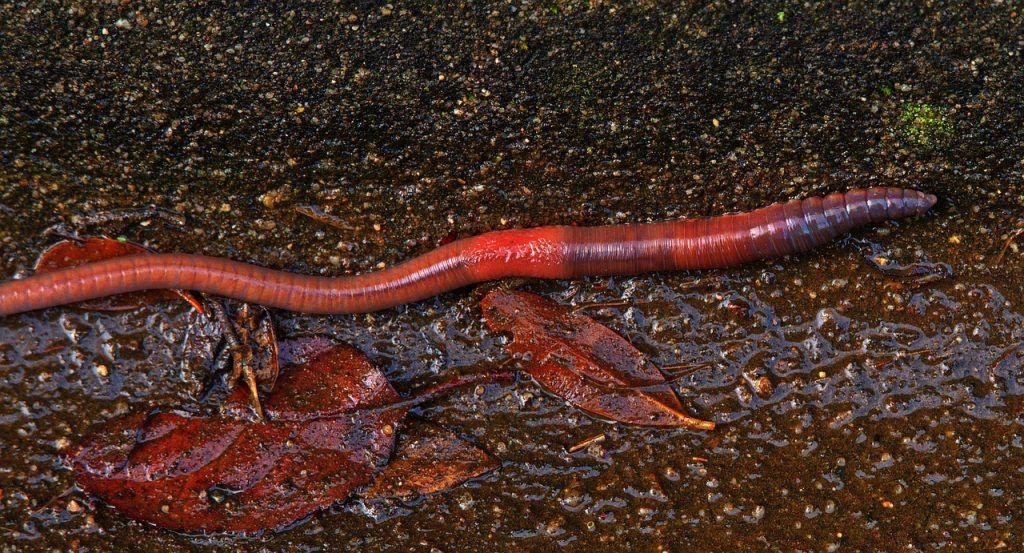
Humidity
Humidity should be kept above 50%, as lower moisture content is not conducive to earthworm respiration and can increase earthworm mortality .
The operating humidity range should be between 70-90%, with a recommended content of between 70-80% for vermicomposting operations.
If decomposition has become anaerobic, to restore healthy conditions and prevent worm death, excess residual water should be reduced and the container returned to a normal humidity level.
To do this, first, reduce the addition of food scraps with a high moisture content, and second, add fresh, dry bedding, such as shredded newspaper, to the container, mixing well.
pests
Pests, such as rodents and flies, are attracted to certain materials and odours, usually coming from large amounts of kitchen waste, especially meat. Eliminating the use of meat or dairy products in a worm bin decreases the chance of pests.
Predatory ants can be a problem in African countries.
In hot weather, fruit and vinegar flies breed in bins if fruit and vegetable waste is not completely covered with sheets or clothing. This problem can be avoided by completely covering the waste with at least 5 centimeters of sheets.
Maintaining the correct pH (close to neutral) and the water content of the bucket (just enough water so that the wrung out bedding will drip a couple of drops) can help prevent these pests as well.
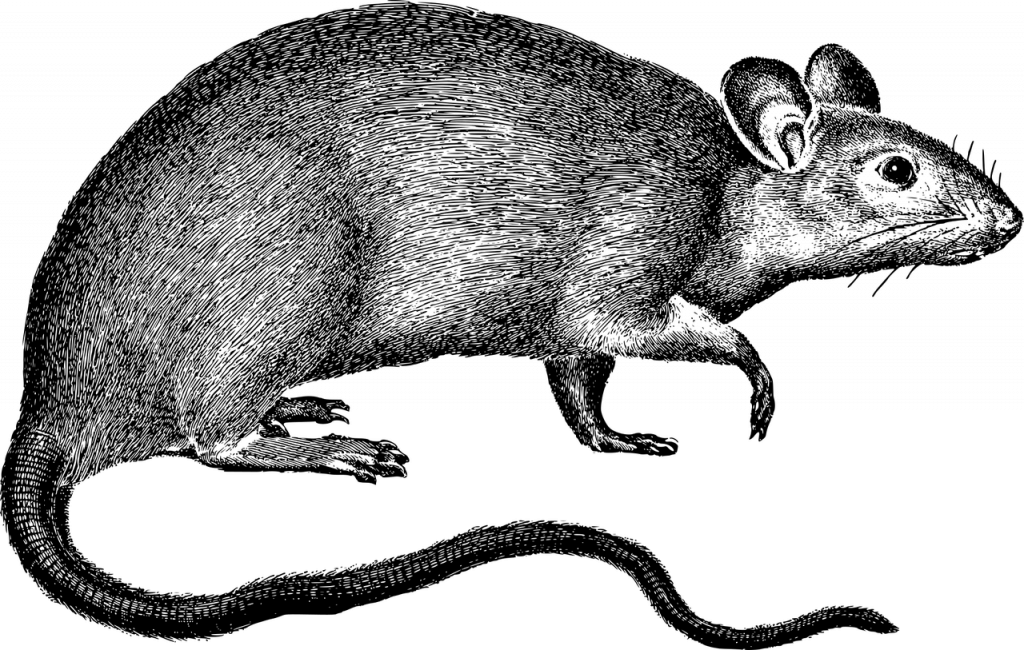
worm escape
The worms usually remain in the container, but may try to get out of the container when they are first introduced, or often after a storm when outside humidity is high.
Maintaining proper conditions in the worm bin and shining a light over the bin when they are first introduced should eliminate this problem.
Nutrient levels
Commercial vermicomposters can produce quality and consistent results.
Since home and small-scale systems use a varied mix of feedstocks, the nitrogen, phosphorous, and potassium (NPK) content of the resulting vermicompost will also be inconsistent. NPK analysis can be useful before applying vermicompost to the orchard.
To avoid overfertilization problems, such as nitrogen burn, vermicompost can be diluted as a tea 50:50 with water, or as a solid it can be mixed 50:50 with potting soil.
Also, the mucous layer created by the worms that surrounds their droppings allows for a «timed release» effect, meaning that not all nutrients are released at once.
This also reduces the risk of plants getting burned, as is common with the use and overuse of commercial fertilizers.
What crops benefit from earthworm humus fertilization?
Most crops benefit from this powerful composting technique. But among them we highlight:

